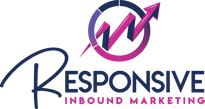Maximizing Lead Generation: The Power of Progressive Forms in HubSpot
Discover how implementing progressive forms in HubSpot can revolutionize your lead generation strategy and drive higher conversion rates.
Understanding Progressive Forms
Progressive forms in HubSpot are a powerful tool for capturing lead information and optimizing the user experience. These forms allow you to gather information from your website visitors over multiple form submissions, gradually collecting more data as the visitor engages further with your content.
By using progressive forms, you can avoid overwhelming your visitors with lengthy forms while still gathering valuable information for your marketing and sales efforts.
One of the key features of progressive forms is that they dynamically adjust to the information already provided by the visitor. This means that returning visitors don't have to fill out the same information repeatedly, making the form submission process more efficient and user-friendly.
Progressive forms also enable you to personalize the user experience based on the visitor's previous interactions with your website. By tailoring the form fields to their specific needs and interests, you can increase the chances of conversion and provide a more relevant experience.
In summary, progressive forms in HubSpot offer a way to capture valuable lead information while improving the user experience. They allow you to gather data over multiple form submissions, personalize the user experience, and avoid overwhelming visitors with lengthy forms.
Benefits of Progressive Forms in HubSpot
Implementing progressive forms in HubSpot can bring several benefits to your lead generation strategy:
- Improved conversion rates: By gradually collecting information over multiple form submissions, you can reduce form abandonment rates and increase the chances of conversion.
- Enhanced user experience: Progressive forms make it easier for visitors to engage with your content by eliminating the need to fill out the same information repeatedly. This improves the overall user experience and encourages continued interaction.
- More accurate lead data: With progressive forms, you can gather more accurate and up-to-date lead data. By dynamically adjusting the form fields based on the visitor's previous submissions, you can ensure that you're collecting the most relevant information.
- Personalization opportunities: Progressive forms enable you to personalize the user experience based on the visitor's previous interactions. By tailoring the form fields to their specific needs and interests, you can provide a more targeted and relevant experience.
Overall, implementing progressive forms in HubSpot can lead to higher conversion rates, improved user experience, and more accurate lead data.
Creating Progressive Forms in HubSpot
Creating progressive forms in HubSpot is a straightforward process that can be done through the form builder tool. Here are the steps to create a progressive form:
- In your HubSpot account, navigate to Marketing > Forms.
- Click the name of a form or create a new form.
- In the form editor, on the right panel, click Queued progressive fields.
- Click and drag over any fields you want to show in place of a contact's previously captured fields. Queued fields will appear in this order if a contact has known values for any of your progressive form fields.
- To set an existing field as a progressive field, hover over the field and click the edit pencil icon.
- In the left panel, click the Logic tab.
- Then, click Progressive field options.
- Click the dropdown menu and select Replace with queued progressive field. If this field has been previously submitted, the field will be replaced with the next queued progressive field.
By following these steps, you can easily create progressive forms in HubSpot and start capturing valuable lead information.
Optimizing Progressive Forms for Maximum Lead Generation
To optimize progressive forms for maximum lead generation, consider the following best practices:
Keep the number of form fields reasonable: While progressive forms allow you to collect more information over multiple steps, it's important to strike a balance and avoid overwhelming the visitor. Only ask for the essential information that you need to qualify and nurture the lead.
Use conditional logic: Leverage the power of conditional logic in your progressive forms to show or hide fields based on the visitor's previous submissions. This ensures that the form remains relevant and tailored to their specific needs.
Incorporate smart fields: Smart fields automatically populate known information about the visitor, such as their name or email address, based on their previous interactions. This saves time for returning visitors and improves the user experience.
Implement progressive profiling: Progressive profiling allows you to gradually gather more information about a lead over time. Instead of asking for all the information upfront, you can use progressive forms to collect additional data in subsequent interactions.
Test and optimize: Continuously test and optimize your progressive forms to maximize their effectiveness. Monitor conversion rates, form abandonment rates, and the quality of the lead data to identify areas for improvement.
By following these best practices, you can ensure that your progressive forms are optimized for maximum lead generation and deliver the best possible results.
Best Practices for Implementing Forms in HubSpot
When implementing forms in HubSpot, it's important to keep the following best practices in mind:
- Place forms strategically: Position your forms in prominent locations on your website or landing pages to maximize visibility and encourage conversions. Consider placing forms above the fold or at the end of engaging content.
- Use compelling copy: Craft persuasive and concise copy for your form fields and call-to-action buttons. Clearly communicate the value proposition and benefits of filling out the form to encourage visitors to take action.
- Optimize for mobile: Ensure that your forms are mobile-friendly and responsive. With the increasing use of mobile devices, it's crucial to provide a seamless form submission experience across all devices.
- Leverage integrations: Take advantage of HubSpot's integrations with other tools and platforms to streamline your lead generation process. Connect your forms with CRM systems, email marketing software, or customer support platforms to automate workflows and improve efficiency.
- Monitor and analyze performance: Regularly monitor and analyze the performance of your forms using HubSpot's analytics tools. Track conversion rates, form abandonment rates, and other relevant metrics to identify areas for improvement and optimize your lead generation strategy.
By implementing these best practices, you can effectively leverage forms in HubSpot to drive lead generation and achieve your business goals.

